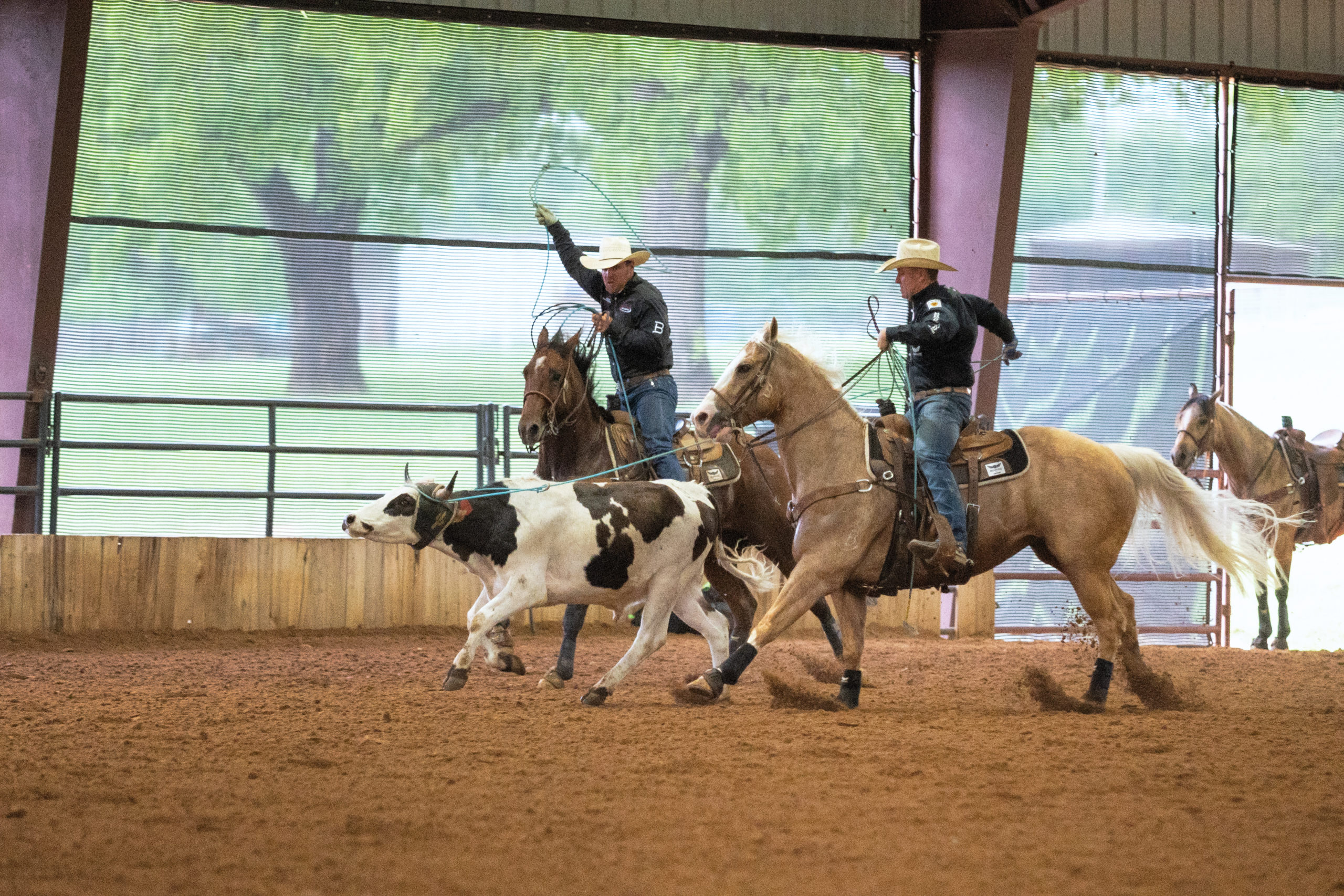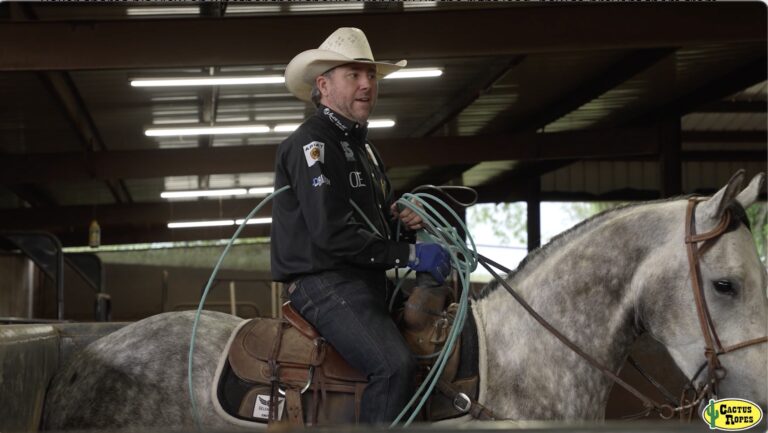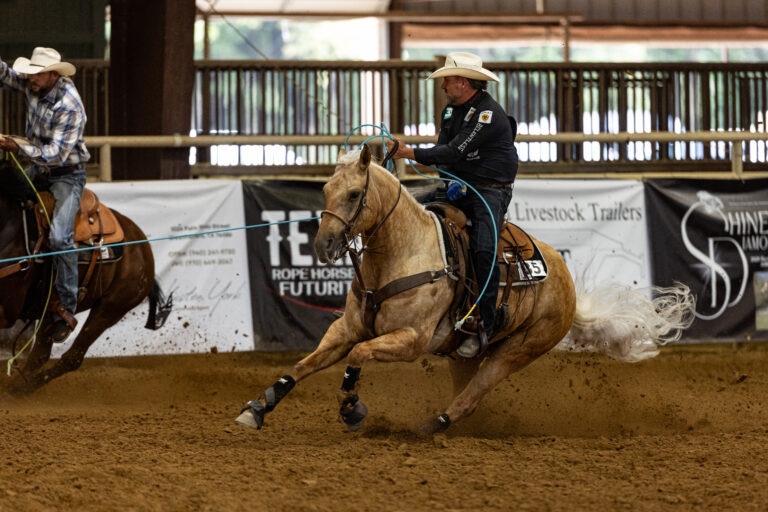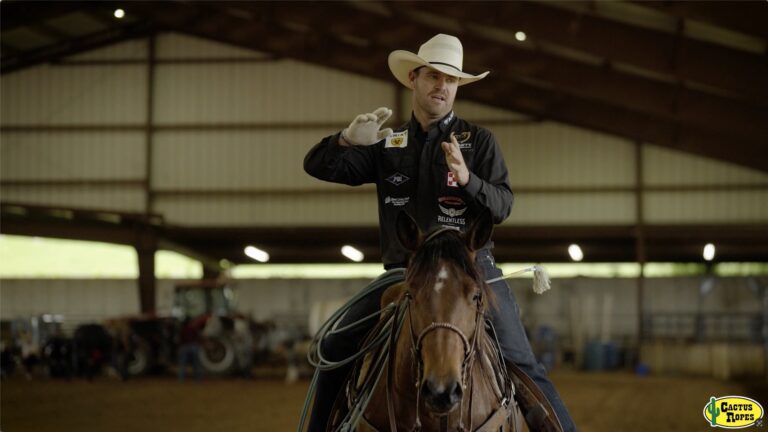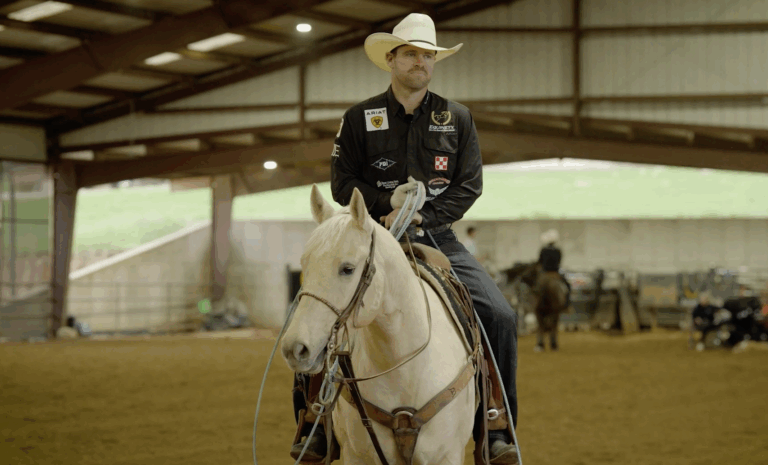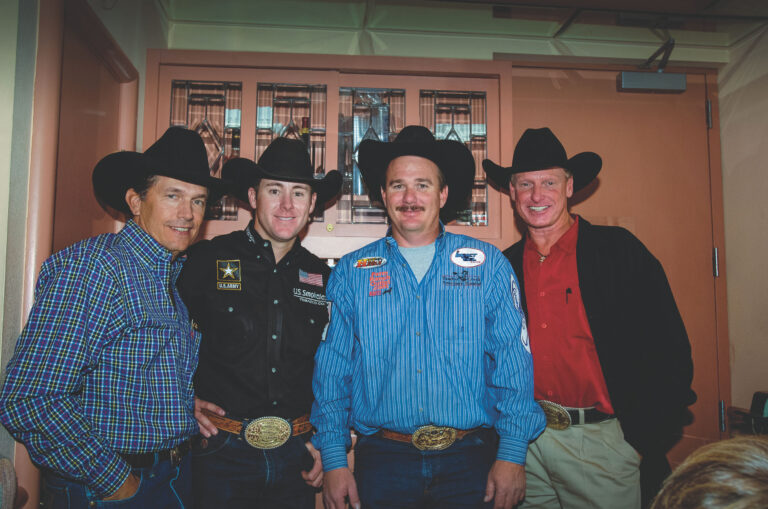Question: I read your column from a few months ago about managing speed in a running-bred horse. In it, you mentioned how you’ve gotten accustomed to adding run to cow-bred horses. I’d love to hear more about how you do that. — Justin Hatch; Rexburg, Idaho
Learn about running-bred head horses
Answer: Everybody is at a different stage with their horses, so sometimes applying what I’m going to say too early may cause problems. The cow horses have some great things going. The part I love is that they go find the cow. That’s something that you never want to take out, especially heading. So I’ll always let them go find the cow, but the only difference is I will push them past their natural rate zone. If you reward them hanging back, that becomes habit. I’ll push them through where they want to rate at home and then let them settle in a tick past where they’re running.
Brazile and Baker Purchase Standout Stallion Show Me the Buckles
Push them past their comfort zone and let them settle into a new rate place. Don’t let them be drawing back before you get there. Once that happens, that’s too late.
Horses that have a lot of cow will read your rope and your weight distribution. They’re not just reading the cow—they’re reading the other signals so much. So be aware of what you’re doing with your body and what you’re doing with your rope and keep everything moving to the cow consistently.
Learn from Trevor Brazile on Roping.com
ADDED INSIGHTS
From Relentless Remuda trainer Miles Baker:
Cow horses used to pin their ears and go find the cow. But the way they’re bred and trained these days, if you watch a cow horse, their ears are up and listening to a cow. They’re bred to be so reactive to cattle.
If we’re roping on them, and we’re running to the cow, their ears are up and they don’t always want to go all the way to the cow because they’re trying to hang back and read the cow. It makes it even more important to start them with a ton of breakawaying. You don’t have to throw your rope—just go track over them and swing and swing and swing. You want them to find the cow and follow the cow, and the less reacting they have to do, the better. That includes the rope, which is why I won’t even throw it at first. Then, I’ll move to roping one, but I’ll keep tracking the cow.
The less reaction I can put in there will take the hesitation out of them. It will add run to them. If they’re reading the cow and overreacting, they won’t want to run.




